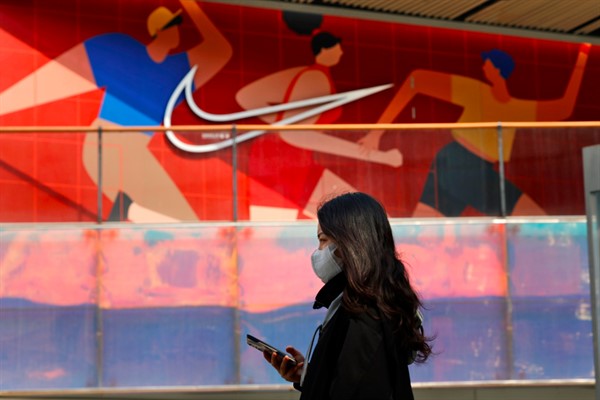China has a long history of wielding its immense market power as a tool of economic coercion. During the first half of the 20th century, it fought back against colonial powers by organizing boycotts of goods from the United States, the United Kingdom and Japan.
Nearly a century later, China is again using the boycott as a weapon against what it views as unwanted outside interference—in this case, criticism from foreign officials and businesses over allegations of human rights abuses against ethnic minorities in China’s Xinjiang region. Yet despite its $14 trillion economy—the world’s second-largest—the threat of a Chinese boycott is less dangerous than it appears. Beijing is no longer in the same position of weakness it once was in the 20th century, but with foreign investment crucial to its economy, there are limits on Beijing’s power to sway overseas businesses.
To be sure, the buying power of Chinese consumers matters greatly to Western apparel retailers. According to the consulting firm McKinsey, China is on track to soon become the world’s biggest fashion market. But amid a growing outcry over reports of forced labor being used by cotton suppliers in China’s Xinjiang province, where an estimated 1 million Uyghur Muslims are incarcerated in what Beijing calls “re-education camps,” prominent Western brands including Nike and H&M have spoken out about the situation in Xinjiang and have clarified that they do not source their products or materials there. In response, these companies are feeling the heat from Chinese authorities and consumers. H&M has been removed from e-commerce websites; Chinese consumers are burning their Nikes; and celebrities are renouncing endorsement deals with Adidas, Burberry, LaCoste and others.

